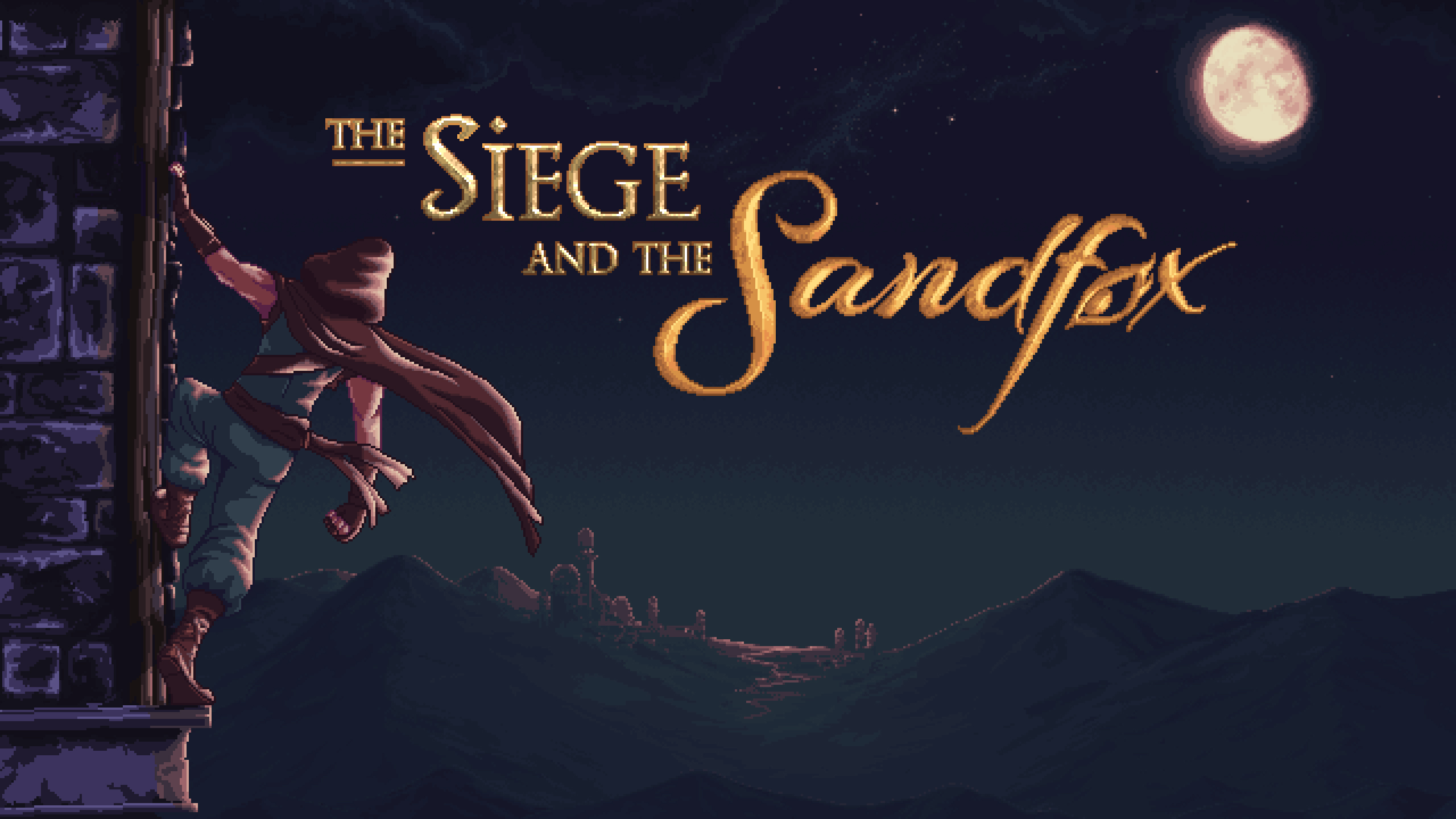They say all good things come to those who wait. But when that wait is ten years long, you can be forgiven for thinking The Siege and the Sandfox was dead and buried at the bottom of a labyrinthine dungeon. But, no. The sands of time have shifted, and the Persia-like stealth metroidvania is alive and kicking and coming back for justice.
Backed and funded in part by the UK government of 2015, The Siege and the Sandfox has seen its fair share of development ups and downs. Finally releasing ten years on, it’s like its own (very extended) version of the games’ story – see below.
Ten years in development is all well and good, but only if the end product is worth playing. Stealth-centred parkour platforming has me foaming at the mouth to be honest, putting me in mind of the far-too-few 2D stealth titles in the last few decades – Mark of the Ninja for example. Can The Siege and the Sandfox measure up in a tightly focused niche genre, and emerge into the light with the goods?
The titular Sandfox is a well-known but shadowy figure working in the Kariman Palace as a protector of the royals and part-time assassin. When on patrol through the rooftops, they witness the queen poisoning her husband, the king, and are quickly arrested, charged with the crime themselves, stabbed with a glass dagger, and cast down into the lowest floors of the dungeon. All a bit much if you ask me. But the Sandfox survives. The narrator does a fine job of making the most of some hard-to-follow pixel cutscene work here and should be commended, as without it I was struggling a little.
You play as the Sandfox, and it’s your job to pick yourself up, dust yourself off, and climb out from the underground caves and tunnels, through the prisons, and eventually to the palace itself to undo the queen’s nefarious plot. The Sandfox is weakened from fall and stabbing etc, and so to begin with has almost nothing beyond a wall jump to help them. Soon however, their strength returns, and you can expect a plethora of cool moves to help you in your ascent.
But where many Prince of Persia-like games would equip you with weaponry and more at this point, The Siege and The Sandfox never does. You are one man, mortally wounded, and an alert armoured guard means game over. You can creep, swim, dive, wall run, knock out, and personal favourite, belly-flop unaware enemies, but for the most part, you must remain unseen.
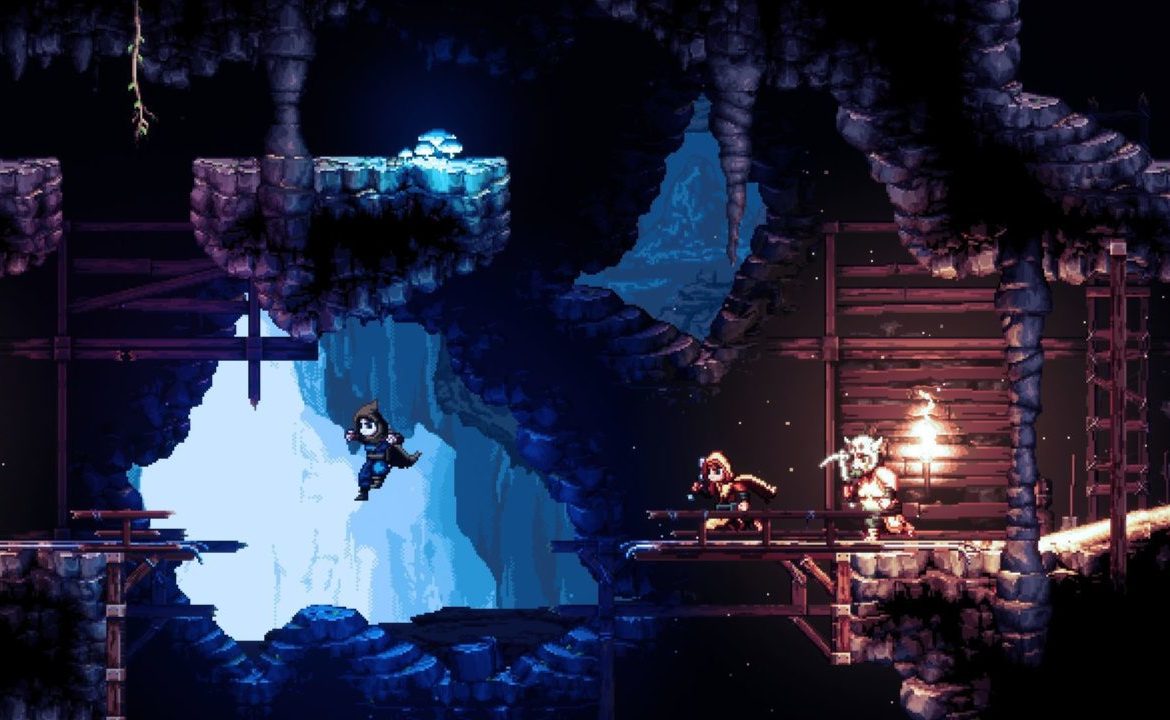
The Siege and the Sandfox is a metroidvania that employs NPC-given quests to send you off exploring each of a dozen or so beautiful underground mazes. The NPCs are your fellow denizens of the prisons; the darklings, the bottom rung rat-feeders, the crime lords who profit on the inside, the pit fighters – basically every dodgy facet of a labyrinthine prison and human nature combined.
Quests go from something as seemingly simple as locating a pet rat (promptly eaten), to maiming gladiators, defacing artwork, bribes, and finding all manner of secrets. It’s often simple but never dull incentives for exploring and finding the next move or new route into a whole new area. It’s cliché to say it these days but the labyrinth itself is as much of a character as the Sandfox – I would not have been so invested had every new locale not been alive and interesting to explore.
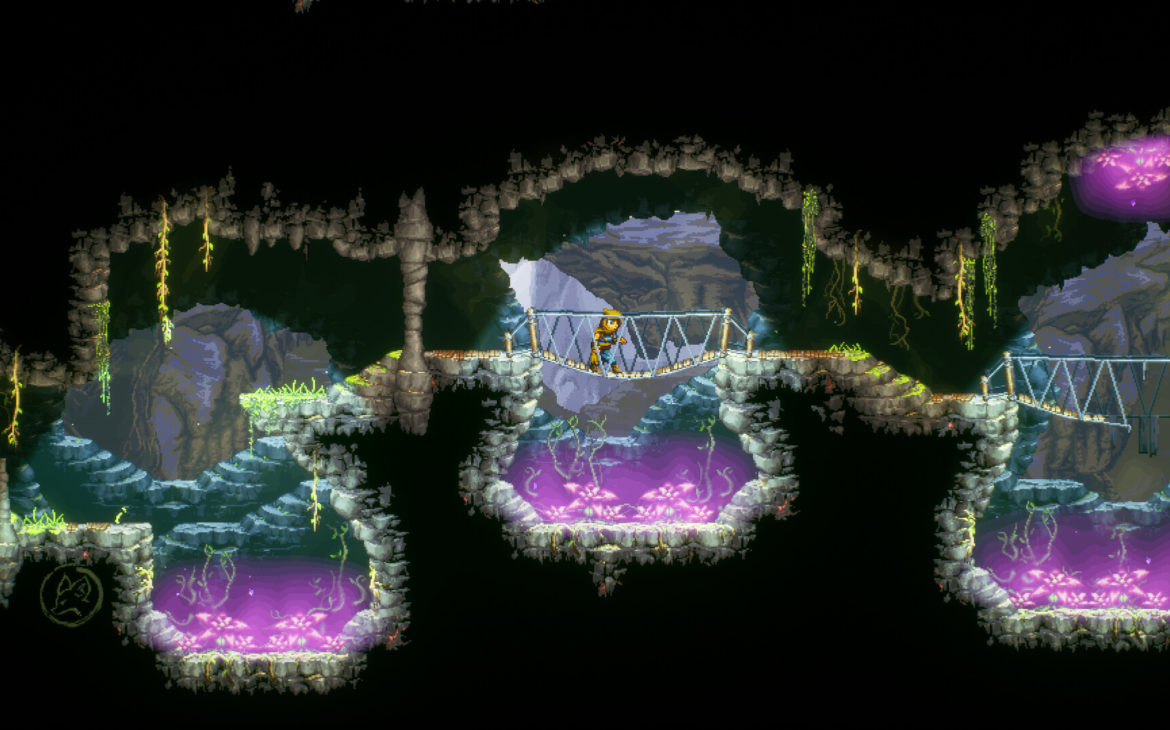
Combat is virtually unneeded throughout the game. You can knock out enemy guards if they are unaware of you, but there are plenty you can never get the drop on. You get a reinforced breast plate armour at one point, which instead of having anything to do with surviving a hit, which you can’t – it’s one-hit deaths – was actually redeployed as a heavy striking implement, with the Sandfox using it to bellyflop on otherwise helmeted and therefore protected guardsmen, or through fragile floors.
Most of the time however you are hiding in pots, or behind logs, hanging on ledges, or otherwise staying firmly in the rafters of each cavernous space. Avoidance is key and you can manage the whole game without killing anyone if that matters to you. I think I did assassinate someone by falling on them at one point, but it was probably avoidable.
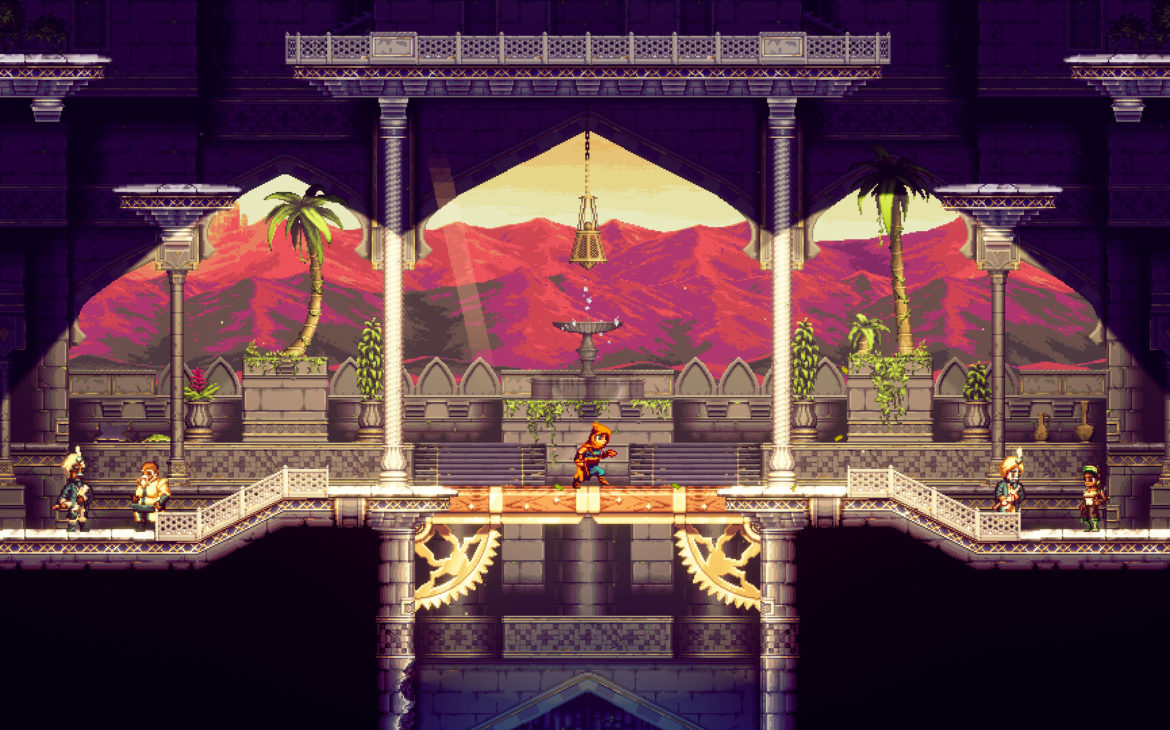
And with no bosses and virtually no combat comes that focus on stealth, but also on acrobatic moves, and a little of the precision platforming I like so much. It falls somewhere between Abe’s Oddysee and Celeste, never so hard as to be punishing, but certainly precise and often depending on exactly where you took off in your jump.
There’s a staggering amount of situational awareness to the platforming too. Ever noticed how in some games you can just grab a ladder mid jump, and in others you just fall, because that’s not the ‘start’ of the ladder. The Siege and the Sandfox has the former in spades. You can drop, grab and swing off anything you think you can, but can also leap onto all these things mid-jump jump for example.
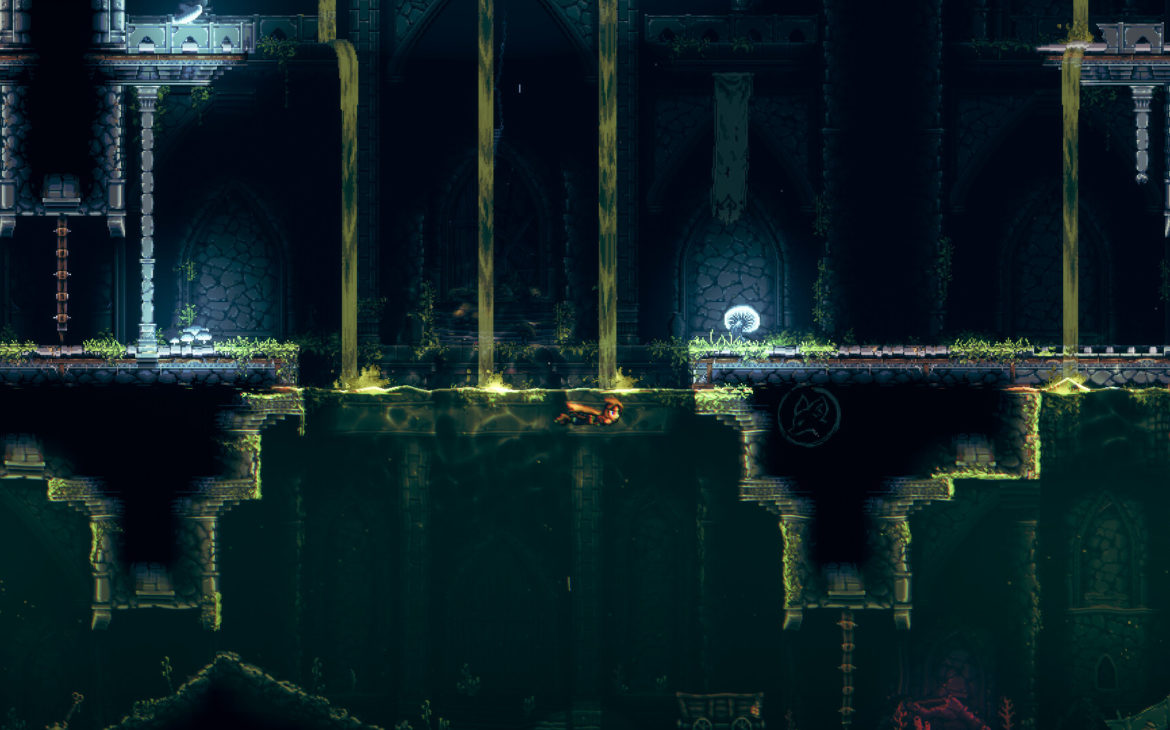
I was blown away by the beauty of this underground kingdom – to say you can get lost in it is a proclamation of its atmosphere and seamlessness. Not since Ori have I found myself so happily lost in a Metroidvania. I have included as many beautiful screenshots as I can here so you can get a good idea of the wonderful places to explore. We know from Ori and Hollow Knight that underground mazes can be made to look as beautiful as any overground forest, and the Siege and the Sandfox takes that brush, with a burnt desert umber, and continues the painting.
Sound design is also en pointe throughout, with appropriate instrumentation, pealing thrums and clashes tied to gameplay, and even the narrator often commenting on what you get up to. ‘The Sandfox hid in a vase hoping to avoid detection’ for example – don’t worry, it’s not every time, just enough to enfold you and your choices in the narrative as if you are creating it. The narration will be familiar to some as the voice heard all across Baldur’s Gate 3, so you can be sure it’s appropriately atmospheric and wicked.
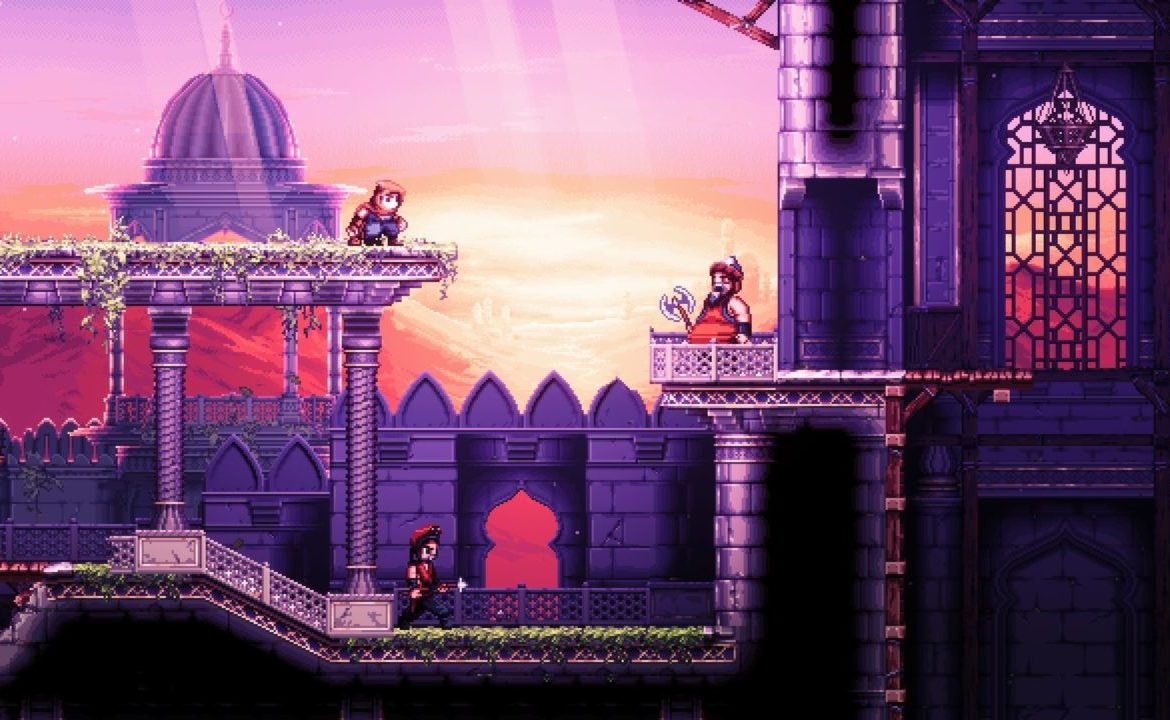
The Siege and The Sandfox is not without it’s issues, however. There is a real lack of those NPCs giving out quests after you’ve done the first five or so – from there you are on your own for a considerable time, just trying routes to possibly stumble across more moves that then open up new areas, or upon more quests. I found a glut of places where I was forced to redo the whole of each one-way system just to find my way to an impassable (at that point) grate for example. I missed a fast travel point and even after trying dozens of ways back to the area I couldn’t re-access it. It’s a game with something of an old-skool mindset – mark on the map where you might want to come back to, because the game will not tell you where to go. This lack of handholding will please some gamers and frustrate others.
I also found glitches, mainly the AI variety. Guards can easily get stuck, or see you and then never ever move again, forcing you to restart long-past checkpoints. Guards often loaded without their patrol route loading, so they would just stand still, or you could hit them with the knockout move, and they wouldn’t fall. They’d just stand and glitch out. Most glitches were sorted by a reload, but when the reload knocks you back dozens of screens, that can get pretty tedious.
Overall, the Siege and the Sandfox is a successful metroidvania. Injustice has to be one of the best incentives developers can give me for carrying on with their games – I will pursue the reestablishment of justice and the punishment of those evildoers for many many hours, often without further input and despite considerable glitching and a frustrating lack of direction. The Siege and the Sandfox has this juicy rat steak of a premise, and then adds a beautiful pixel art labyrinth of a world to explore, simple but still slightly elevated quests that gently propel you to explore all of it, moves that never get in the way of enjoying said exploration, and just enough atmosphere to make you lose a few hours of your life without blinking.

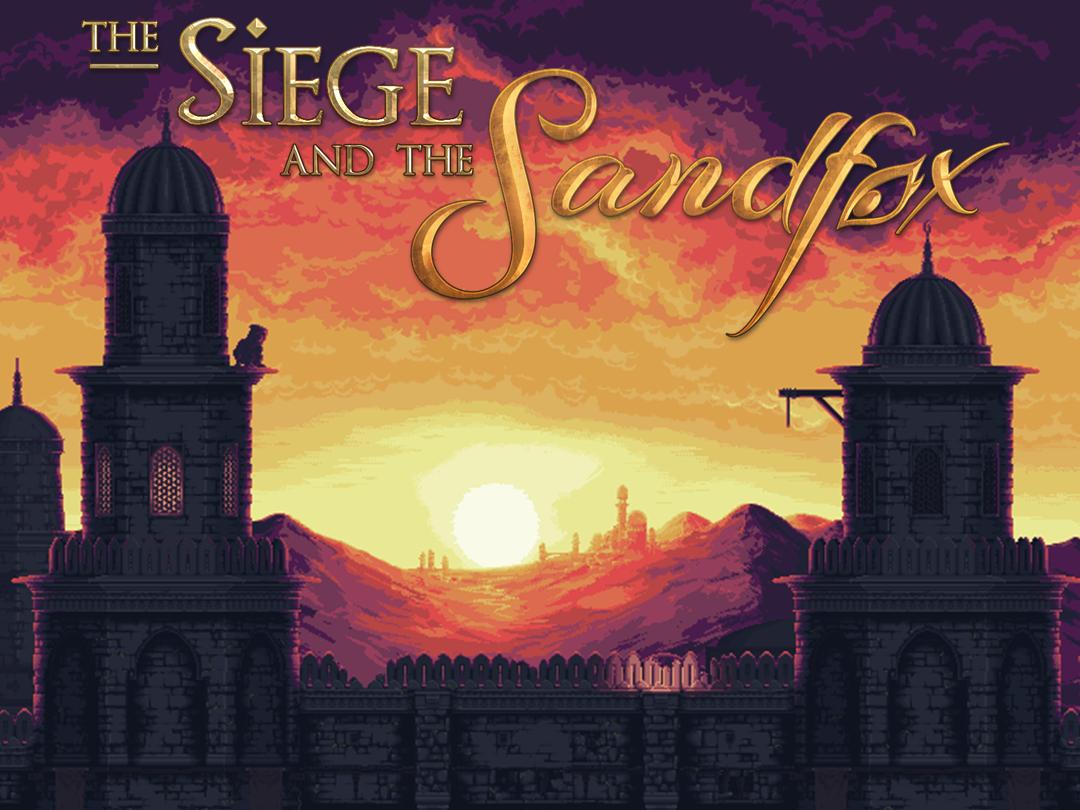
The Siege and the Sandfox is available now on PC via Steam (review platform), Xbox One, PlayStation 4, and Nintendo Switch.
Developer: Cardboard Sword
Publisher: Plaion, Chucklefish
Disclaimer: In order to complete this review, we were provided with a promotional copy of the game. For our full review policy, please go here.
If you enjoyed this article or any more of our content, please consider our Patreon.
Make sure to follow Finger Guns on our social channels. Twitter, Facebook, Twitch, Spotify or Apple Podcasts – to keep up to date on our news, reviews and features.
